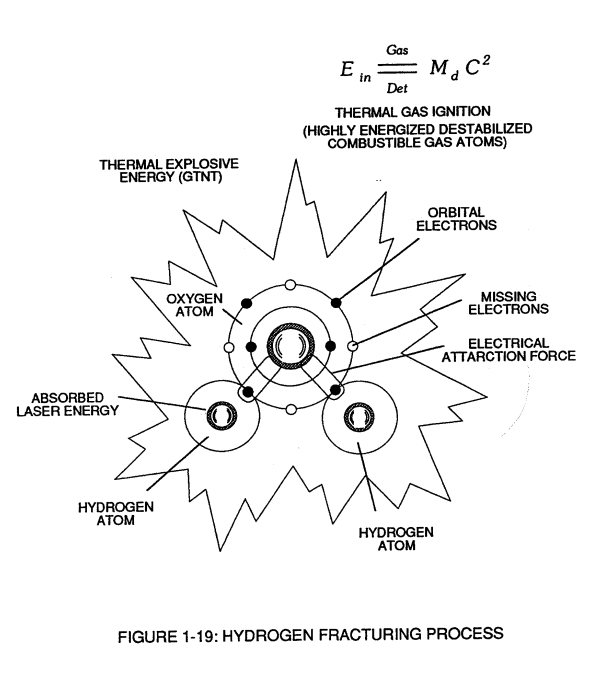Thermal Explosive Energy
Exposing the expelling "laser-primed" and "electrically charged" combustible gas ions (exiting from Gas Resonant Cavity) to a thermal-spark or heat-zone causes thermal gas-ignition, releasing thermal explosive energy (gmt) beyond the Gas-Flame Stage, as illustrated in Figure (1-19) as to (1-18).
|
Figure (1-19) |
Figure (1-18) |
Thermal Atomic interaction (gmt) is caused when the combustible gas ions (from water) fail to unite or form a Covalent Link-up or Covalent Bond between the water molecule atoms as illustrated in Figure (1-19).
The oxygen atom having less than four covalent electrons (Electron Extraction Process) is unable to reach "Stable-State" (six to eight covalent electrons required) when the two hydrogen atoms seek to form the water molecule during thermal gas ignition.
The absorbed Laser energy (Va, Vb and Vc) weakens the "Electrical Bond" between the orbital electrons and the nucleus of the atoms; while, at the same time, electrical attraction-force (qq'), being stronger than "Normal" due to the lack of covalent electrons, "Locks Onto" and "Keeps" the hydrogen electrons.
These “abnormal” or “unstable” conditions cause the combustible gas ions to over compensate and breakdown into thermal explosive energy (gmt).
This Atomic Thermal-Interaction between highly energized combustible gas ions is hereinafter called "The Hydrogen Fracturing Process."
By simply attenuating or varying voltage amplitude in direct relationship to voltage pulse-rate determines Atomic Power-Yield under controlled state.


